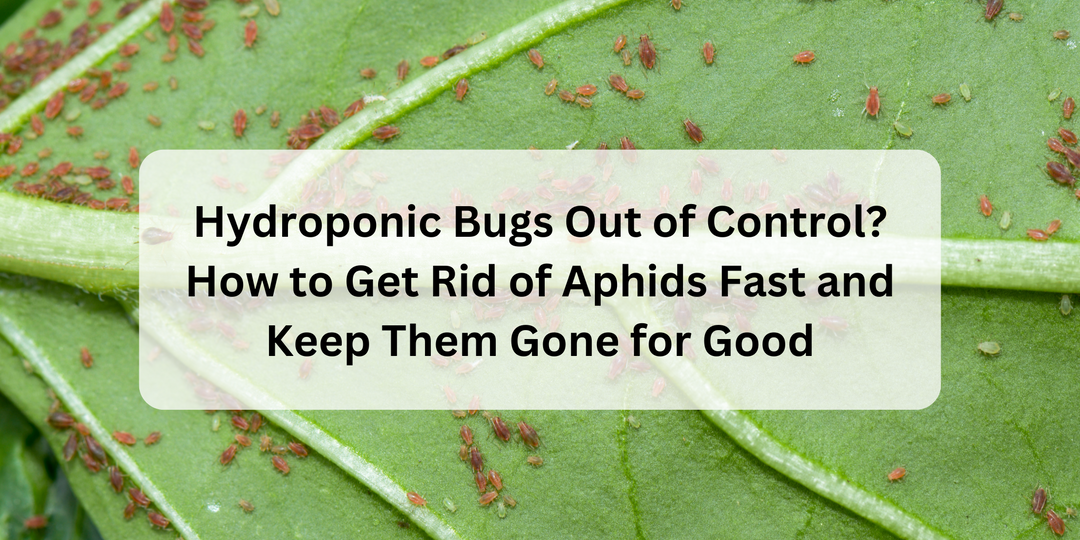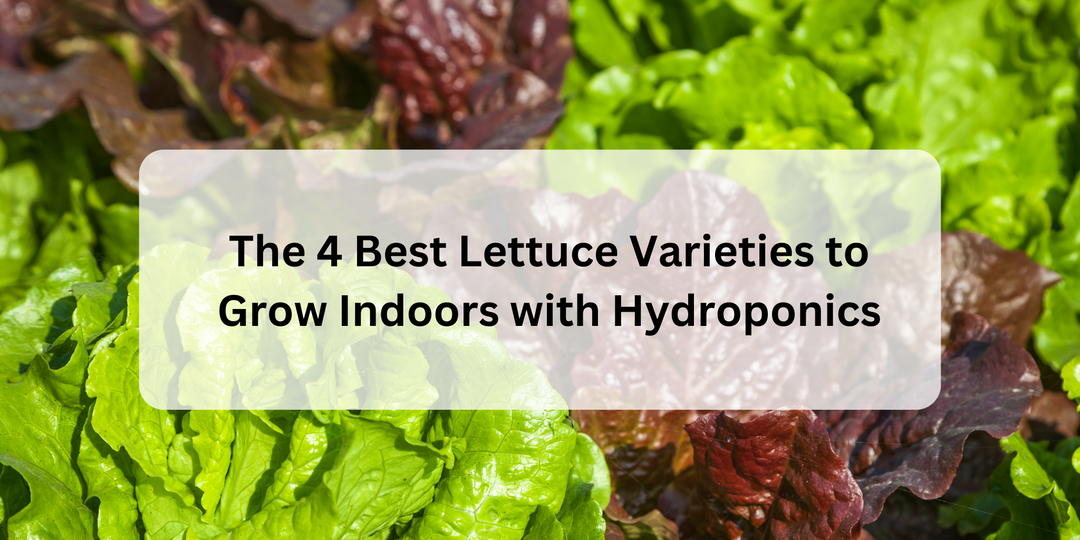5 Reasons Your Seeds Are Not Germinating in Hydroponics and How to Fix It
Are you excited about starting your hydroponic garden but getting frustrated with poor seed germination? You’re not alone. It’s disappointing when you carefully plant your seeds, only to have a few, if any, actually sprout.
But don’t worry— We’re diving deep into five reasons why your seeds might not be germinating and, more importantly, how to fix each issue. This isn’t your basic advice you’ll find everywhere; it’s an in-depth guide with real strategies you can apply today to boost your success rate.
1. Know the Type of Seeds You’re Planting (And Why It Matters)

One of the first mistakes many people make is not understanding the specific needs of the seeds they’re planting. Not all seeds are the same—some have tough, thick seed coats that act as a protective barrier, while others have delicate, thin layers. This difference is critical because it directly affects how you approach germination.
Hard-Coated Seeds
Seeds like spinach, Swiss chard, cilantro and peas have thick seed coats designed by nature to protect them from harsh conditions. But here’s the problem: these coats also block water from reaching the embryo inside, which is essential for triggering growth. The solution? Pre-soaking
The Damp Paper Towel & Hydrogen Peroxide Method

For seeds with hard coats, here’s a method that works wonders: Take your seeds and place them in a damp (not soaked) paper towel. Add a few drops of 3% hydrogen peroxide to the towel—just enough to moisten it. The hydrogen peroxide works to gently break down the tough outer shell by oxidizing the seed coat, which increases its permeability. This allows water to reach the embryo inside, jumpstarting the germination process.
Once the seeds are wrapped in the damp towel, place it inside a plastic baggie, seal it, and store it in a dark, warm place. The ideal temperature range for this method is between 18°C and 26°C (65°F to 80°F). Over the next 7 days, check the towel daily to ensure it stays damp (but not soaked), and watch for signs of germination. If the seed coat softens and splits, the root tip will emerge, indicating the seed is ready to be transplanted into your hydroponic setup.
Why Hydrogen Peroxide Helps
Hydrogen peroxide does more than just break down the seed coat—it also sterilizes the seed surface, which is essential in preventing mold, bacteria, or fungal growth that could compromise the health of your seedlings. This dual action of softening the seed coat and sterilizing the seed is what makes this method particularly effective for tough seeds.
2. Water: Are You Using Too Much or Too Little?

Water is essential for germination, but finding the right balance is key. Too little water, and the seed can’t absorb enough to activate growth. Too much water, and you risk suffocating the seed, especially if there’s no room for oxygen.
Avoid Overwatering in Rockwool (or Any Growing Medium)
If you’re using Rockwool, a common mistake is pushing the seed too deep into the material. Why is this a problem? When the seed is buried too deep, water fills all the tiny air pockets, cutting off oxygen, which the seed needs to survive. Without proper airflow, the seed will suffocate and could rot before it ever has a chance to sprout.
But this issue isn’t limited to Rockwool. Any growing medium—whether it’s perlite, coco coir, or even soil—can create the same problem. If your medium is overly compacted or completely saturated with water and lacks air pockets, your seed will be deprived of oxygen. The result? A drowned seed that never germinates.
To avoid this, place your seed on top of the medium rather than burying it, and make sure it gets enough moisture by pouring water gently over the seed or using the damp paper towel method with hydrogen peroxide. This allows water to soak in gradually while keeping airflow around the seed, providing the perfect balance of moisture and oxygen to encourage healthy germination.
3. Temperature: The Silent Killer of Germination

Did you know that temperature is one of the most common reasons seeds fail to germinate? And I don’t just mean extreme temperatures; even a few degrees too high or too low can drastically impact your germination rates.
The Sweet Spot for Seed Germination
For most seeds, the ideal temperature range for germination is between 18°C and 26°C (65°F to 80°F). This range works for many popular hydroponic crops, but it’s essential to check the specific needs of the seeds you’re planting. Some seeds—like those from cool-weather plants such as lettuce—prefer temperatures closer to the lower end of this range, while others may thrive in warmer conditions.
Temperature Fluctuations
One often-overlooked issue is temperature fluctuation. If your hydroponic system is near a drafty window, a heating vent, or an air conditioner, the constant shifts in temperature could prevent germination altogether. Keeping the temperature stable is key. You can use a heat mat under your trays to ensure consistent warmth, especially if you're growing in cooler conditions.
4. Poor Seed Storage: What You Don’t Know Could Be Ruining Your Seeds
Even the best techniques won’t help if your seeds are no longer viable. Proper storage is crucial for maintaining the viability of your seeds.
How to Store Seeds Correctly
Seeds should always be stored in a cool, dark, and dry place. Exposure to heat, light, or moisture dramatically shortens their shelf life. Once seeds are exposed to such conditions, they lose their ability to germinate over time.
If you’ve had your seeds for a while and are unsure whether they’re still viable, perform a germination test using the damp paper towel method. Place 10 seeds on a damp paper towel, seal it in a plastic bag, and keep it in a warm place for a week. If at least 70% of the seeds sprout, they’re still good. Anything less, and it’s time to order fresh seeds.
5. Seed Age: When Fresh Seeds Make All the Difference
Did you know that seeds don’t last forever? Depending on the type of seed, germination rates start dropping after a year or two. While some seeds can last for several years under optimal storage conditions, others, like onions or parsnips, lose viability much more quickly.
Here’s a quick breakdown of average seed life expectancy if stored correctly:
- 1 year: Onions, parsnips, parsley
- 2 years: Spinach, peppers, okra
- 3 years: Leeks, beans, peas, celery
- 4 years: Basil, mustard, cauliflower, tomatoes
It’s always a good idea to buy seeds in smaller batches and plant them fresh. If you’re saving seeds from your garden, be sure to mark the date you collected them so you know when to plant them by.
Final Thoughts: Mastering Seed Germination in Hydroponics
At the end of the day, successful seed germination in hydroponics comes down to creating the perfect balance of moisture, temperature, and oxygen. Some seeds might be more stubborn, but with techniques like pre-soaking hard-coated seeds or using the hydrogen peroxide method, you can give your seeds the head start they need.
If you're new to indoor gardening or simply want to avoid common mistakes, our 4-Day Indoor Garden Challenge is perfect for you. It’s designed specifically for beginners who want to learn the right way to grow indoors without spending thousands of dollars on mess-ups or wasting hours trying to figure it out on their own. In just six days, you’ll learn the essentials, from choosing the best hydroponic system for your lifestyle to building a solid foundation for long-term success. Plus, we’ll cover the basics that no one talks about, like how to set up your garden properly from the start!
And if you’re eager to dive deeper into great indoor gardening habits, check out our blog post: Start Your Hydroponic Garden the Right Way: 6 Essential Habits Every Beginner Should Know. It introduces the ‘little effort, huge garden’ method—perfect for getting big results with minimal stress.





Leave a comment